Science News

Researchers find less expensive, more efficient material design for water purification. »
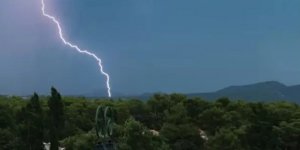
Many tropical forests are experiencing increases in lightning and lianas, thanks in part to global change. »
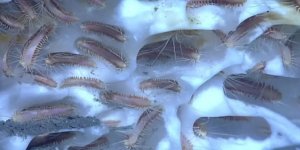
Microfossils help monitor when deep-sea methane deposits convert to gas and rise to the seafloor. »

Scientists have traced the family trees of two transmissible cancers that affect Tasmanian devils and have pinpointed mutations which may drive growth of deadly diseases. »

Inspired by one of the mysteries of human perception, an ORNL researcher invented a new way to hide sensitive electric grid information from cyberattack: Within a constantly-changing color palette. »

Overuse of antibiotics in agriculture can lead to the emergence of bacteria resistant to the body’s innate immunity, a study led by the University of Oxford suggests. »

A new image reveals the most detailed map of dark matter distributed across a quarter of the entire sky, reaching deep into the cosmos. »

Researchers found some of the lowest rates of heart and brain disease ever reported. »

For the first time, astronomers have observed, in the same image, the shadow of the black hole at the centre of the galaxy Messier 87 (M87) and the powerful jet expelled from it. »
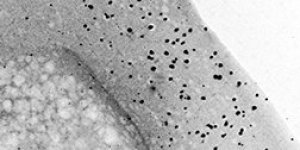
Researchers at the U.S. Department of Agriculture's Agricultural Research Service recently developed sustainable machine-washable antimicrobial wipes that can be used at least 30 times for cleaning hard and nonporous surfaces. »

Alternative way to produce colored paint that is more environmentally friendly. »
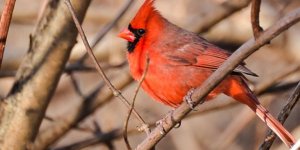
Study analyzes avian cross-country biodiversity changes over a year. »
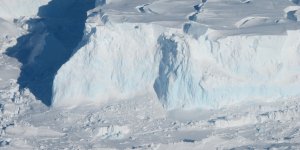
Ice sheets can retreat up to 600 metres a day during periods of climate warming, 20 times faster than the highest rate of retreat previously measured. »
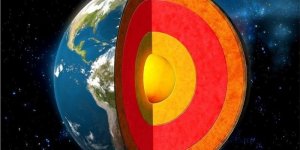
Scientists believe that Earth’s core is a massive ball of iron. However, a new discovery suggests that the Earth’s core is surrounded by an unexpected ancient structure. »

In the quest to understand how we think, 'everything has been working up to this'. »

Flowers like petunias emit scent chemicals called volatile organic compound. »

Seas help limit global warming by soaking up carbon dioxide emissions. »

Tree ring-like marks indicate an animal's age and can be used to estimate the rate of growth. »

A research team including scientists at Oregon State University has provided the first evidence that a species of endangered sea star protects kelp forests along North America's Pacific coast by preying on substantial numbers of kelp-eating urchins. »

Microbes that help break down biodegradable materials are likely complicit in release of PFAS substances. »

Underwater waves deep below the ocean’s surface – some as tall as 500 metres – play an important role in how the ocean stores heat and carbon, according to new research. »

Research reveals clues about the characteristics of Earth when life is thought to have emerged. »

Occipital place area supports visually guided navigation, but only when walking; not crawling. »

Atom-thin material gives scientists a new form of modular carbon. »

Warming a crystal of the mineral fresnoite, Oak Ridge National Laboratory scientists discovered that excitations called phasons carried heat three times farther and faster than phonons, the excitations that usually carry heat through a material. »

Harnessing natural killers to treat infections may fail when bacterial species interact. »

Pancratistatin is a chemical compound found in the spider lily, a native Hawaiian flower. Unlike traditional treatments, it kills cancer cells while keeping healthy cells intact. »

Cambridge researchers have observed a highly unusual behaviour in the endangered freshwater mussel, Unio crassus. »

Approach reduces time to dissolve CVST blood clots from average of 29 hours to under half an hour. »

Mosses, one of the few plants in Antarctica, can be overridden by advancing glaciers. »

Discovery will enable the manufacturing of biorenewable materials from trees and corn. »

Researchers have built the first ever map showing every single neuron and how they’re wired together in the brain of the fruit fly larva. »

New genome-based taxonomy offers better management of blooms and toxins. »

First record of theropods — dinosaurs that include birds and their closest non-avian dinosaur relatives. »

Study maps tiny cellular sensors that determine the proper positioning of our organs. »

Researchers find parallel physical differences and genomic signatures in urban populations. »

Even though roundworms are nearly too small to be seen, they can pose major problems in corn, soybean, peanut and other crops. Collectively, these roundworms are known as plant-parasitic nematodes, and they cause $173 billion in crop losses worldwide each year. »

Researchers from Yale University and Oak Ridge National Laboratory collaborated on neutron scattering experiments to study hydrogen atom locations and their effects on iron in a compound similar to those commonly used in industrial catalysts. »

A study claims that the mysterious "dark energy", which cosmologists believe is accelerating the expansion of the universe, could arise from supermassive black holes in the hearts of galaxies. »

Researchers find that heat conductivity of boron arsenide decreases under extreme pressure. »

Significant advance for technologies such as quantum optics and laser displays for augmented and virtual reality. »

Concentric rings of flowering in sunflowers maximize visits from pollinators. »

Fossil bones from two newly-described penguin species, one of them thought to be the largest penguin to ever live – weighing more than 150 kilograms, more than three times the size of the largest living penguins – have been unearthed in New Zealand. »

Many become disoriented by the glow from urban areas and wander off route. »

A collaboration between scientists at Cambridge and UCL has led to the discovery of a new form of ice that more closely resembles liquid water than any other and may hold the key to understanding this most famous of liquids. »

Sorghum bicolor, a pollen-rich grass species cultivated for grain and forage, which looks similar to corn, can be an important food source for pollinators and other beneficial insects during times when pollen and nectar are scarce. »

First-of-its-kind experimental evidence defies conventional theories about how plasma emits or absorbs radiation. »

Cambridge scientists have successfully trialled an artificial pancreas for use by patients living with type 2 diabetes. »

Fossils solve a century-old debate over how the brain evolved in arthropods. »

Researchers have developed a system that can transform plastic waste and greenhouse gases into sustainable fuels and other valuable products – using just the energy from the Sun. »